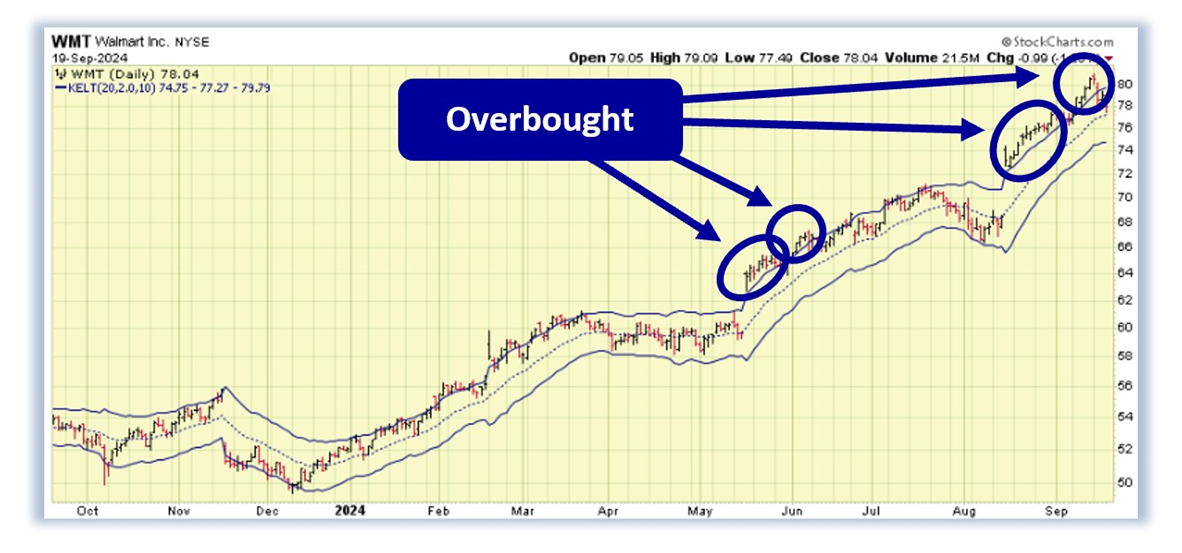While I was looking through my “buy list” recently to see if any stocks were offering an attractive trade setup, I came across this one trade and I didn’t need to see any others. The stock that caught my eye was Walmart Inc. (WMT), highlights Chuck Hughes, co-founder of Hughes Optioneering.
I noticed that WMT had traded into prime trade entry territory, which I call my “Buy Zone.” Below is a snapshot of WMT’s current stock chart. Let’s do some analysis of the chart so you can see what made me stop what I was doing and begin looking for a potential trade to place.

You can see the stock is in the midst of a strong bullish uptrend, which we want to target. But this alone is not enough to convince me that I need to jump in on a trade right away. Another crucial component of placing successful trades over time is knowing the correct time to enter them. This is why I always look at the Keltner Channels.
Keltner Channels can serve as an overbought or oversold indicator for stocks. If a stock’s daily stock price is trading above the upper Keltner Channel, this signals that the stock is temporarily overbought and subject to a retracement. Even stocks that are in the strongest bull trends do not advance in a straight line.
When a bullish stock dips into our Buy Zone, this is when we want to put on a trade. The Keltner Channel “Buy Zone” occurs when a stock is trading below the upper Keltner Channel. Once the daily price is trading below the upper channel, it provides a lower-risk buying opportunity as the bullish stock is likely to continue rallying.
Now that we have identified the stock that we want to trade and we have pinpointed our entry point, the next question is, how do we actually want to gain exposure to this trade?
Of course you could simply buy the stock, which we sometimes do. But many times when we spot a setup like this, we want to add a bit more leverage to our position to unlock more explosive profit potential. We can do so buy purchasing a call option.
When selecting which call option to purchase, I often rely on my 1% Rule to help narrow down my choice of option strikes. The 1% Rule helps me select an in-the-money option that has a higher probability of producing a profit when compared to an at-the-money or out-of-the money option. Once I have one selected, I will vet the trade using my Call Option Purchase calculator to determine the trade’s profit potential.


















